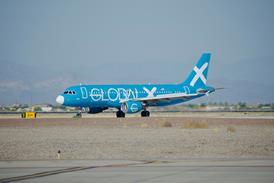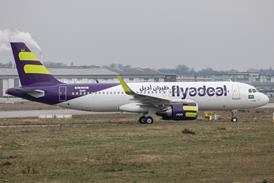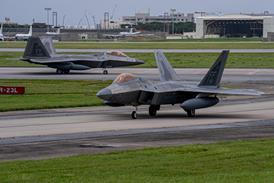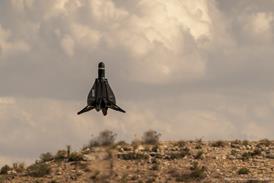
| This category is sponsored by: |  |
|---|
2. Boeing 747
The world’s first wide-bodied airliner and probably the world’s most recognisable airport apron resident for non-aviation people.

The Boeing 747 tapped into a rapidly-growing 1960s demand for air travel. This growth had led to concerns that airports would become clogged with increasing numbers of aircraft. Producing aircraft that could carry larger numbers of passengers was seen as a way around the problem.
Legendary Pan Am chairman Juan Trippe urged Boeing to look at a design much larger than the company’s highly-successful 707.
This coincided with Boeing losing out to Lockheed for an ultra-large military transport (the C-5A Galaxy); the contest allowed the Seattle airframer to take advantage of the high bypass engine technology developed for it and use it for a new civil design.
Almost four decades on, the statistics behind the first 747 remain impressive. Its tail was as tall as a six-storey building and the first models had a fuselage length of almost 69 metres.
Building the prototype required the construction of the world’s largest building by volume, the 200 million cu.ft. assembly plant at Everett, Washington.
The project was not without risk. Boeing had to borrow heavily to fund 747 development and came close to ‘betting the farm’ on its new airliner. It succeeded and the 747 family has been a major revenue stream for the company.
The 747 entered service in 1970 and Boeing went on to build 250 747-100A and -100B models. The 747-200 appeared just a year later, with further increased payload and the capability of being produced in freighter and Combi passenger-freighter layout. It was the last model to feature the characteristic spiral staircase to the upper cabin that featured in so many publicity photographs.
The final 747 Classic, the -300, appeared in 1983 and brought the first readily-visible external difference to the design, with its extended dorsal hump.
The first new-generation 747-400, incorporating two-man glass cockpit and winglets, entered service in 1989 and will in turn be succeeded by the quieter, more frugal 747-8, whose first deliveries are scheduled for late 2009.
4. BAe/Aerospatiale Concorde
It is not often that the progress of aviation goes into reverse, but the completion of Concorde’s last commercial passenger flight on 24 October 2003 doubled the flight times on routes previously served by the Anglo-French supersonic airliner.

One of the most remarkable pieces of aeronautical design ever to get airborne, its cost spiralled six times above initial estimates and the UK and French Governments had to write off the development costs.
Initial sales prospects with major airlines seemed reasonable, but a combination of factors – including the quadrupling of oil prices in the early 1970s and environmental concerns over its sonic boom – meant that only Air France and British Airways took the elegant ogival-delta on charge.
The Boeing 747 took more votes in our poll, but arguably only Concorde had the charisma to make airport visitors stop and stare every time it took off throughout its 27 years of service.
11. McDonnell Douglas DC-3
Few aircraft can claim to have revolutionised air travel, but the Douglas DC-3 is one of them. Indeed, some would argue that it was the most significant aircraft ever to fly.
In the US its range and cruising speed brought down the time of transcontinental travel to as little as 15h in the late 1930s.
Worldwide after the Second World War, the conversion of thousands of surplus C-47 military versions to airliners allowed airlines to replenish their fleets.
A measure of its success was that for three decades after1945, airframe designers and manufacturers around the world struggled to create what became the almost mythical ‘DC-3 replacement’. Some fine designs emerged, but none that could quite match the reliability, ruggedness and economics of the DC-3.
12. Airbus A380
Europe’s planned successor to the Boeing 747, which has monopolised its segment of the market for the past 35 years.
Perhaps it was inevitable that a project of the A380’s scale would hit squalls on its route through development. The aircraft’s wiring problems, together with the resultant delivery delays and shockwaves created in the Airbus management structure have not been the happiest start to the programme.
First deliveries to customers are now underway and passenger reaction has been good, however. Airbus makes much play of the ‘green’ aspects of its new aircraft, from using marine transport to move major components around Europe to a 17% reduction in fuel compared to competitors.
The A380 rounds out the Airbus family and the company is convinced that a new ultra-large aircraft plying between the world’s major hubs is the way to go.
26. Boeing 707
Established the classic configuration for airliners to come

100 Greatest
Top 10 | 11-20 | 21-50 | 51-100
Top 5s
Civil Aircraft | Military Aircraft | Person | Moment | Engine
Through the decades
Civil Aircraft | Military Aircraft | Person | Moment | Engine
Source: FlightGlobal.com























